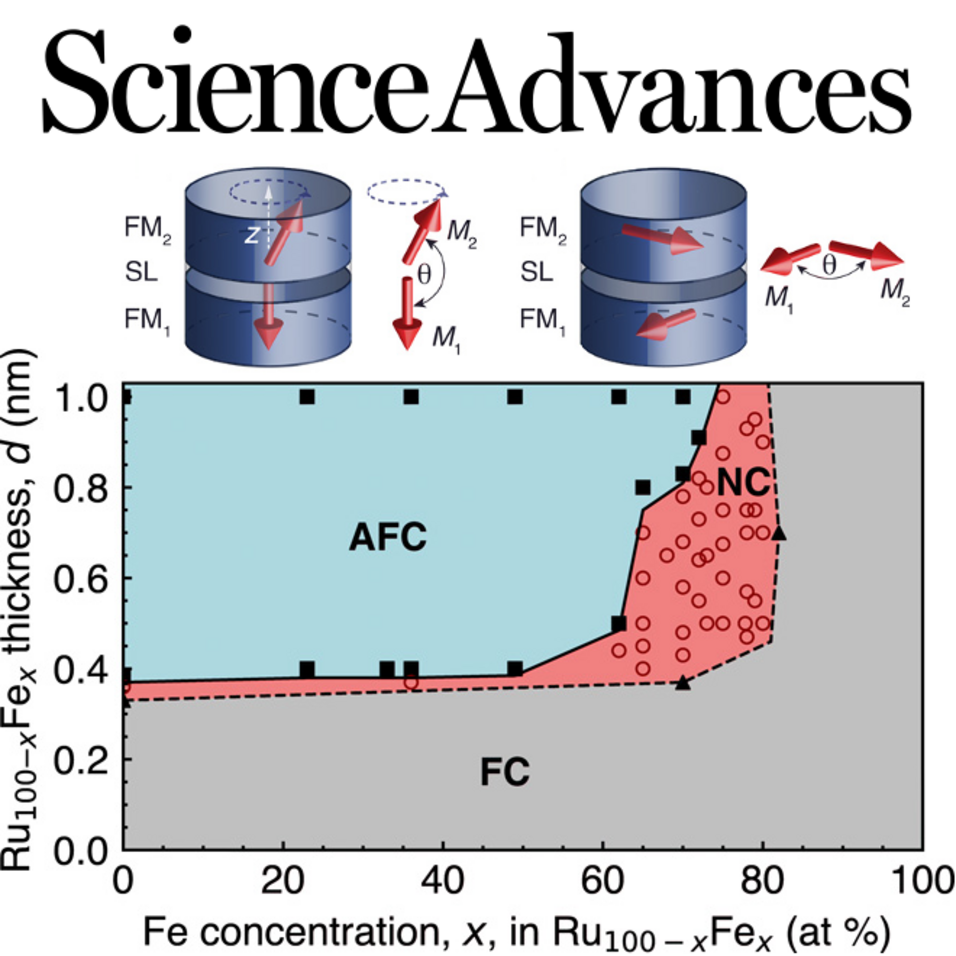Magnetic multilayer systems play a key role in the development of novel storage technologies like spin-transfer torque MRAM and spin-orbit torque MRAM. Up till now, the exchange coupling of two neighboring magnetic layers could be varied in a collinear fashion only by means of the Ruderman–Kittel–Kasuya–<wbr style="color: rgb(34, 34, 34); font-family: Arial, Helvetica, sans-serif; font-size: small; " />Yosida (RKKY) interaction. By varying the iron content in a RuFe spacer layer, the group of Erol Girt from SFU, Burnaby, Canada, showed that the coupling angle can be tuned to arbitrary values by introducing a biquadratic contribution to the interface coupling. Claas Abert and Dieter Suess delivered a theoretical model to describe this novel effect. The joint work was published in Science Advances.
New publication in Science Advances
17.12.2020

